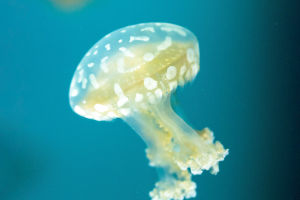Patagonia is one of the most striking natural landscapes in the world, offering a blend of dramatic mountain ranges, tranquil lakes, and vast wilderness.
A dream destination for adventurers and nature lovers alike, this region is home to many iconic sites, including Torres del Paine National Park. Here is your ultimate guide to exploring this majestic corner of the world.
Patagonia
Getting There
Patagonia is accessible from various points depending on whether you are exploring the Chilean or Argentinian side.
From Chile:
By Air: The nearest airport is located in Punta Arenas. From here, you can take a bus or rent a car to reach the park. The drive to Torres del Paine takes around 4 hours.
By Bus: Buses from Punta Arenas or Puerto Natales offer regular services to the park, with tickets costing around $20 USD for a one-way trip.
From Argentina:
By Air: El Calafate is the closest airport to the Argentinian side of Patagonia. You can then take a bus to Torres del Paine, crossing the border to Chile. The journey takes about 5 hours.
Entry Fees and Hours
Entry Fee: The cost of entering Torres del Paine is approximately $35 USD for foreign visitors. Entry is free for children under 12.
Operating Hours: The park is open year-round, though visiting during summer (December to February) provides the most accessible weather. Park hours typically run from 7:00 AM to 10:00 PM.
Torres del Paine National Park
Activities for Lykkers
The region offers a wide variety of outdoor adventures. Here are the top activities that Lykkers will enjoy:
1. Hiking
Patagonia is a hiker’s paradise. The W Trek in Torres del Paine is one of the most popular multi-day treks in the world, offering incredible views of the mountains, glaciers, and rivers. The trek usually takes 4-5 days, but there are shorter day hikes for those seeking a less demanding experience. Don’t miss the base of the Torres (towers), a 9-hour roundtrip hike to an unforgettable viewpoint.
2. Wildlife Watching
Patagonia is home to a variety of wildlife, including guanacos, Andean condors, and the elusive puma. Guided wildlife tours are available for visitors looking to spot some of these magnificent creatures in their natural habitat.
3. Kayaking and Boat Tours
To get an even closer look at the glaciers and lakes, consider a kayaking trip through Patagonia’s pristine waters. Guided tours offer opportunities to paddle alongside icebergs and take in the jaw-dropping scenery from a unique perspective. Boat tours to Glacier Grey are another popular option, giving Lykkers a chance to explore the icy marvels from up close.
Best Time to Visit
The ideal time to visit Patagonia is during the Southern Hemisphere’s summer months from December to February. The weather is warmer, and the daylight lasts for 16-18 hours, giving visitors more time to enjoy the park. However, autumn (March to April) is also a beautiful time to visit, with fewer crowds and golden foliage.
What to Bring
Hiking Boots: Sturdy, comfortable boots are essential for navigating the park’s rocky trails.
Layered Clothing: The weather in Patagonia can be unpredictable, so packing layers is crucial to stay comfortable.
Water and Snacks: While there are refugios (shelters) along the W Trek, having extra water and snacks is recommended for long hikes.
Camera: With the stunning landscapes and abundant wildlife, capturing the beauty of Patagonia is a must.
Dining and Accommodation
While you won’t find many restaurants or luxury hotels in the park, there are a variety of options to suit every traveler.
Campsites and Refugios: Several campsites are available throughout the park for those who prefer to stay close to nature. Refugios provide a slightly more comfortable option with beds and meals included.
Hotels in Puerto Natales: If you prefer more amenities, Puerto Natales, the nearest town, has a range of accommodations, including budget hostels and boutique hotels.
History of the Region
Torres del Paine National Park, established in 1959, has a long history rooted in conservation. Initially used for sheep farming, the area became a protected zone to preserve the unique flora and fauna of Patagonia. The iconic granite towers, formed by millions of years of geological activity, are a testament to the park’s natural history. The park has since become one of the most visited national parks in South America.
Final Thoughts for Lykkers
Patagonia offers an unparalleled adventure into one of the world’s last true wildernesses. Whether hiking through the rugged terrain, watching the sunset over the mountains, or marveling at the glaciers, this destination promises an unforgettable experience for every Lykker. Be sure to plan ahead, pack wisely, and prepare for a journey that will leave you in awe of nature’s grandeur.


